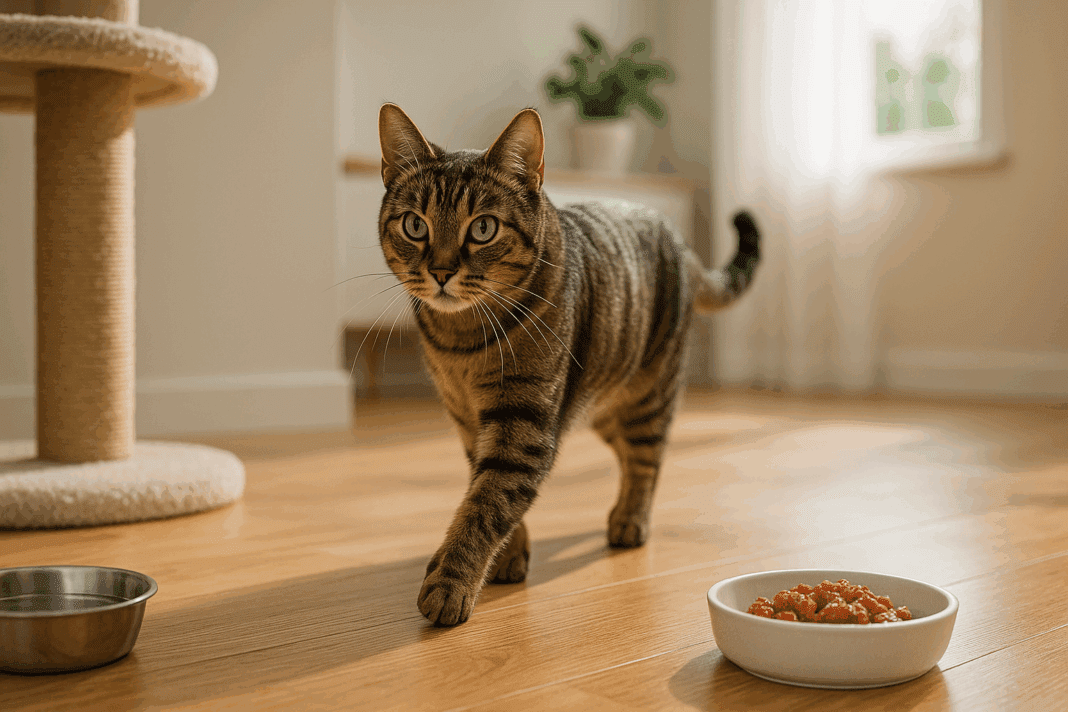Feline diabetes is becoming more prevalent, but it can be managed—and even prevented. Dr. Elsey’s advice on diet, exercise, and litter options can help your cat avoid this life-threatening condition and maintain optimal health.
Feline diabetes is becoming an increasingly common condition among domestic cats, posing significant risks to their health and well-being. Just like in humans, diabetes in cats can lead to serious complications if left untreated, including weight loss, muscle weakness, and even organ failure. However, with proper care, it is possible to manage and, in many cases, prevent feline diabetes. Understanding the key risk factors, such as diet, weight management, and exercise, is critical in helping your cat live a healthy life.
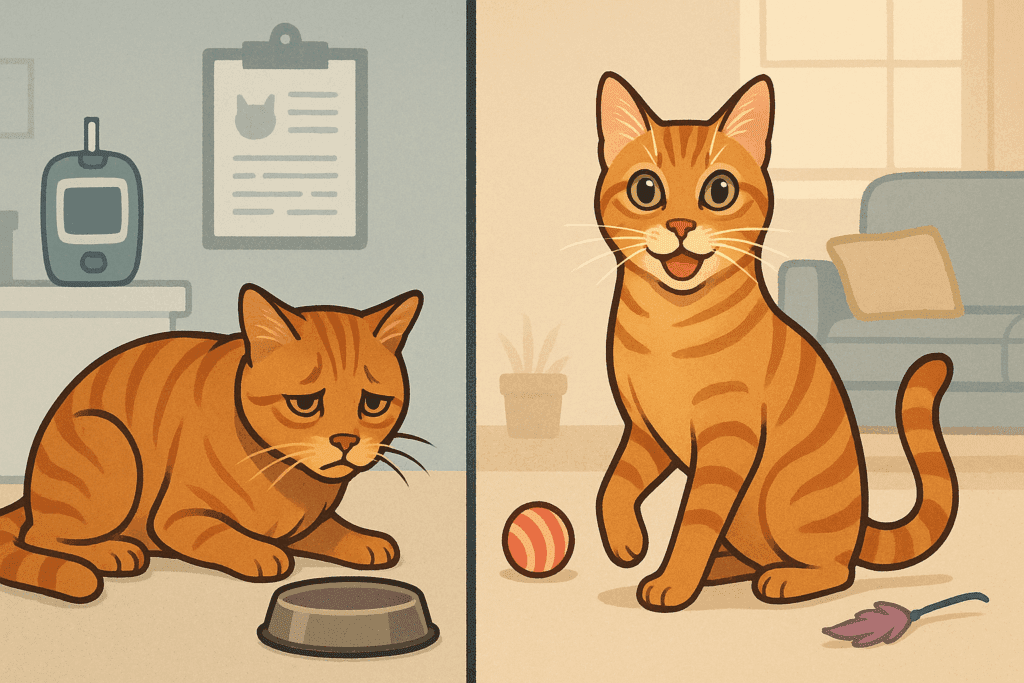
What Is Feline Diabetes?
Feline diabetes, also known as diabetes mellitus, occurs when a cat’s body is unable to produce enough insulin or effectively use the insulin it produces. Insulin is a hormone that regulates blood sugar levels, and when a cat is insulin-deficient or insulin-resistant, glucose builds up in the bloodstream instead of being used for energy. This can lead to a range of health problems, including excessive thirst, frequent urination, weight loss, lethargy, and even more severe complications such as ketoacidosis, which can be fatal.
There are two main types of diabetes in cats:
- Type 1 Diabetes: This is an autoimmune condition where the cat’s body attacks the insulin-producing cells in the pancreas, leading to insulin deficiency.
- Type 2 Diabetes: More common in cats, this type occurs when the body becomes resistant to insulin, often as a result of obesity and poor diet.
As the number of overweight and sedentary cats continues to rise, so does the incidence of feline diabetes. According to the Feline Veterinary Medical Association (FVMA), nearly 1 in 200 cats are diagnosed with diabetes, with many more cases going undiagnosed.
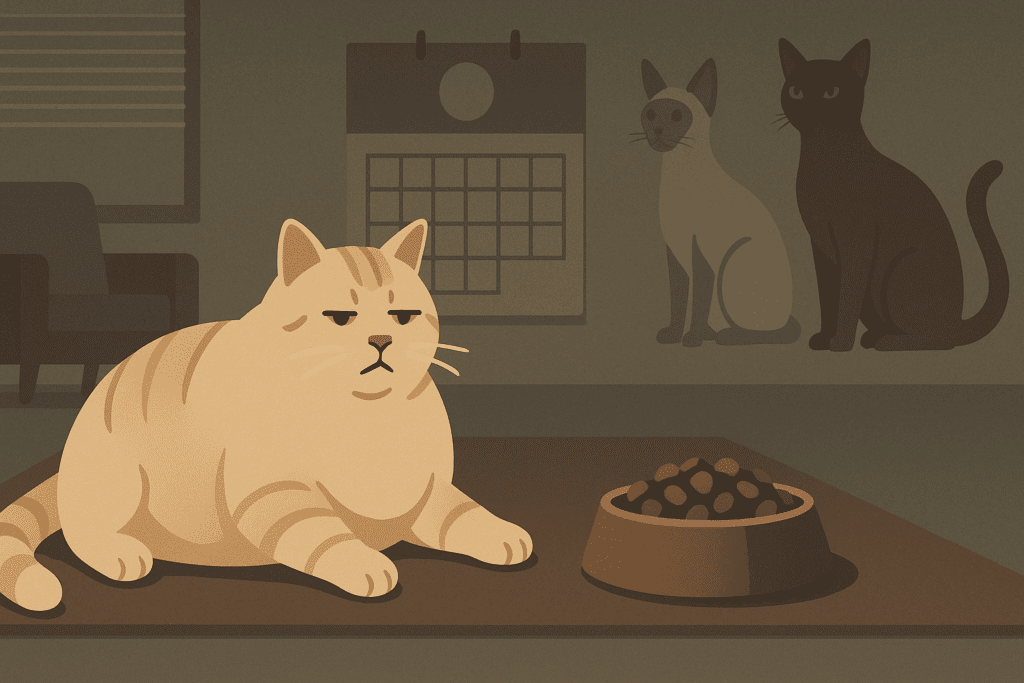
Risk Factors For Feline Diabetes
Preventing feline diabetes starts with understanding the risk factors that may predispose a cat to developing the condition. Some of the primary risk factors include:
- Obesity: Overweight cats are more likely to develop insulin resistance, a key contributor to feline diabetes. According to the American Veterinary Medical Association (AVMA), obesity is one of the most significant preventable risk factors for diabetes in cats.
- Diet: Cats fed a diet high in carbohydrates are at an increased risk of developing diabetes. Unlike humans, cats are obligate carnivores, meaning their natural diet is low in carbohydrates and rich in protein. A diet that deviates significantly from these nutritional needs can lead to insulin resistance.
- Age and Breed: Older cats are more susceptible to diabetes, as are certain breeds, including Burmese and Siamese cats.
- Inactivity: Lack of exercise can contribute to weight gain and decreased insulin sensitivity, further increasing the risk of diabetes.
- Gender: Male cats, particularly neutered males, are more likely to develop diabetes compared to their female counterparts.
How to Prevent Feline Diabetes
Preventing feline diabetes largely revolves around maintaining a healthy weight and diet, as well as encouraging regular physical activity. By addressing these areas early in your cat’s life, you can significantly reduce its chances of developing diabetes.
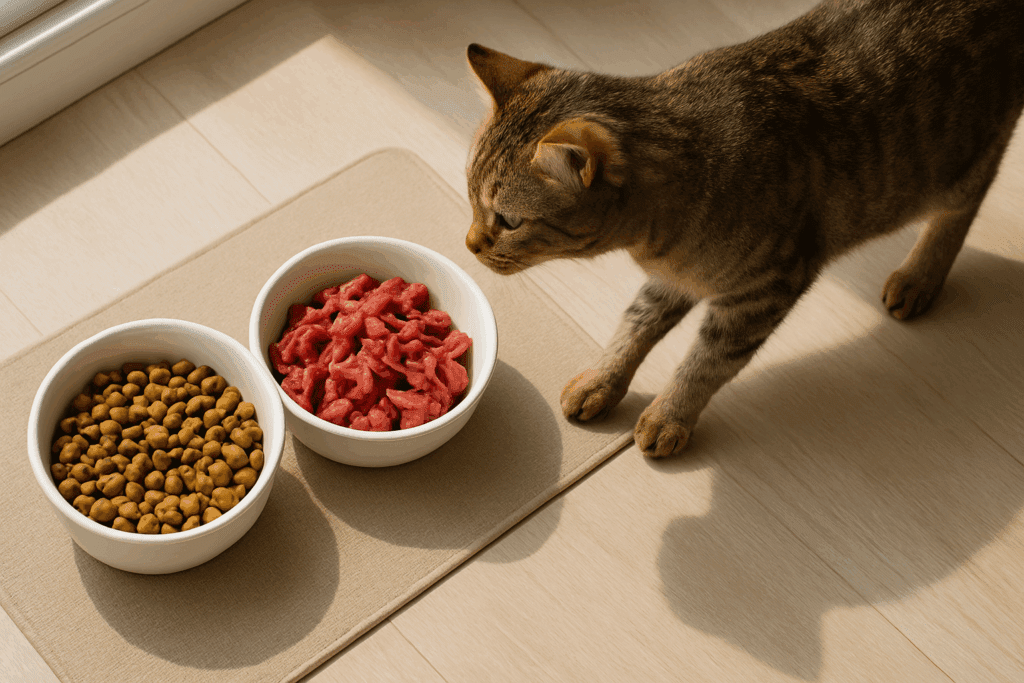
Balanced Diet: Focus on Protein, Minimize Carbohydrates
Feeding your cat a diet that is consistent with its natural nutritional needs is one of the most effective ways to prevent diabetes. As obligate carnivores, cats require high-protein, low-carbohydrate diets to maintain their health. A study published in the Journal of Feline Medicine and Surgery emphasizes that a diet rich in animal protein and low in carbohydrates helps improve insulin sensitivity and reduces the risk of obesity and feline diabetes.
Dr. Elsey’s has been a pioneer in providing high-quality cat foods that cater to these dietary needs. Its cleanprotein™ products are formulated to support lean muscle mass and reduce the risk of blood sugar spikes, addressing one of the root causes of diabetes in cats. By avoiding excess carbohydrates and focusing on high-quality protein sources, Dr. Elsey’s helps cat owners provide their pets with the proper nutrition needed to maintain optimal health. For more information on Dr. Elsey’s cat food products, visit www.drelseys.com.
Weight Management: Keep Your Cat at a Healthy Weight
Maintaining a healthy weight is critical for preventing feline diabetes. Overweight and obese cats are far more likely to develop insulin resistance, a precursor to diabetes. Regular monitoring of your cat’s weight, along with portion control and feeding a nutritionally balanced diet, can help prevent unnecessary weight gain.
The FVMA recommends working with your veterinarian to assess your cat’s body condition and adjust its food intake accordingly. You can also monitor your cat’s weight at home by using body condition score charts, which assess your cat’s weight based on its appearance and palpation.
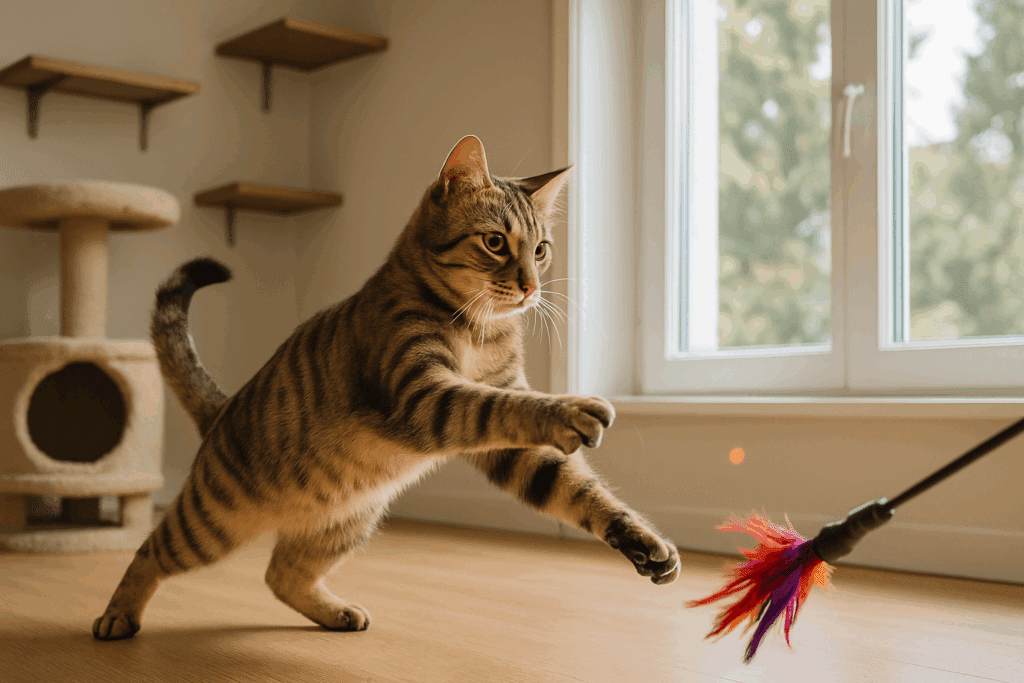
Exercise and Physical Activity: Keeping Cats Active
Just as in humans, exercise is vital in preventing and managing diabetes in cats. Physical activity helps burn calories, build muscle mass, and improve insulin sensitivity. Regular playtime with interactive toys, climbing opportunities through the use of cat trees, and encouraging your cat to chase laser pointers or wand toys can help keep it active.
Renowned feline behaviorist Jackson Galaxy advises cat owners to engage their cats in daily play sessions that mimic natural hunting behaviors. “Cats are natural hunters, and by tapping into their instincts with interactive toys, you not only keep them physically active but also mentally stimulated,” says Galaxy. Exercise not only helps in preventing feline diabetes but also enhances overall well-being by reducing stress and boredom.
Regular Veterinary Checkups and Monitoring
Early detection is key to preventing and managing feline diabetes. Regular veterinary checkups allow for the monitoring of your cat’s weight, blood sugar levels, and overall health. During these visits, your veterinarian may detect any early signs of diabetes and offer guidance on diet, exercise, and any necessary lifestyle changes.
It’s important to keep an eye out for subtle signs of diabetes, such as increased thirst, frequent urination, and unexplained weight loss. If you notice any of these symptoms, consult your veterinarian immediately. Early intervention may prevent the disease from progressing and reduce the need for intensive treatments like insulin injections.
Managing Feline Diabetes: A Lifelong Commitment
Once a cat is diagnosed with diabetes, careful management is essential for maintaining its health and preventing complications. While diabetes is a serious condition, it can be effectively managed with a combination of insulin therapy, diet, and lifestyle adjustments.
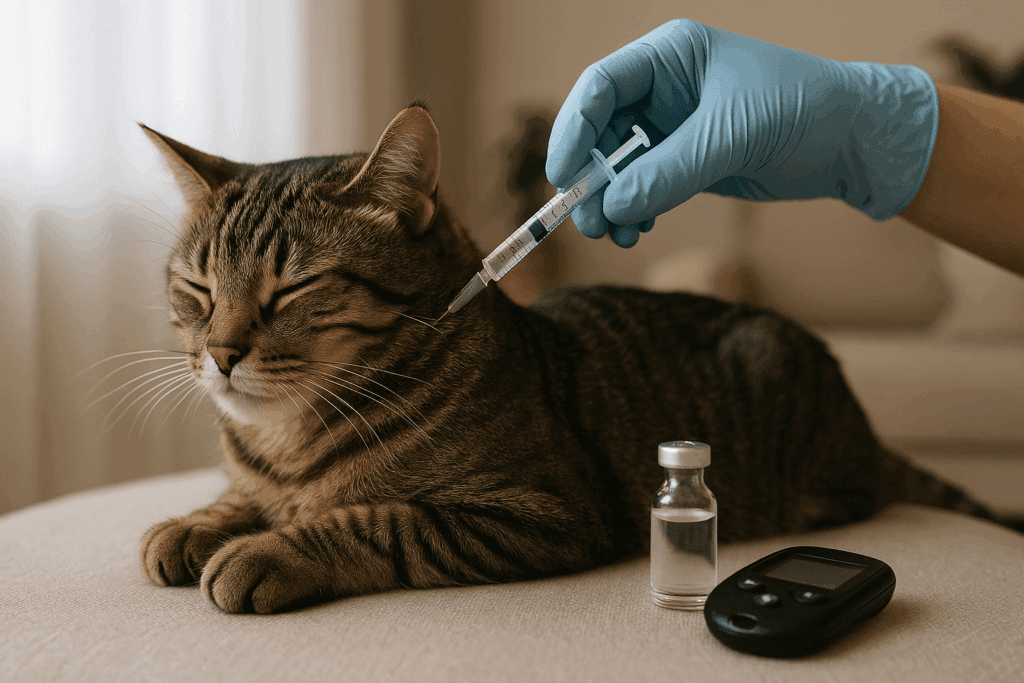
Insulin Therapy
For most diabetic cats, insulin therapy is necessary to regulate blood sugar levels. Your veterinarian will prescribe a specific insulin regimen based on your cat’s needs, and you’ll be trained on how to administer injections at home. Monitoring your cat’s blood glucose levels at home, using a glucose meter designed for cats, is also essential to ensure the insulin is working effectively.
While the idea of administering insulin may seem daunting at first, most cats tolerate the injections well, and over time, it becomes a routine part of their daily care.
Dietary Adjustments for Diabetic Cats
Diet plays a critical role in managing feline diabetes. A high-protein, low-carbohydrate diet helps stabilize blood sugar levels and reduce the need for insulin. Many veterinarians recommend switching diabetic cats to low-carbohydrate diets specifically designed for diabetes management. These diets are formulated to prevent blood sugar spikes and maintain steady energy levels throughout the day.
Dr. Elsey’s cat food, which is naturally low in carbohydrates and high in quality animal proteins, can be a great option for diabetic cats or those at risk of developing diabetes. By mimicking a cat’s natural diet, Dr. Elsey’s products help manage blood glucose levels and support overall health. To learn more about the company’s dietary solutions, visit www.drelseys.com.
Consistent Feeding Schedule
Consistency is key when managing feline diabetes. Feeding your cat at regular intervals helps prevent fluctuations in blood sugar levels, which can occur with free-feeding. Many diabetic cats do best with several small meals throughout the day, as this helps maintain a stable blood glucose level and prevents hunger spikes.
Talk to your veterinarian about the best feeding schedule for your diabetic cat. Some cats may require specific meal times in relation to their insulin injections, while others may benefit from timed automatic feeders to ensure consistent portions throughout the day.
Exercise as Part of Diabetes Management
Just as exercise is crucial in preventing diabetes, it also plays an important role in managing the condition once it has been diagnosed. Encouraging your cat to engage in regular physical activity helps burn calories, improve insulin sensitivity, and prevent muscle loss, all of which are important in managing diabetes.
In addition to structured play sessions, providing opportunities for natural behaviors such as climbing and exploring can help keep your cat active. Cat trees, shelves, and puzzle toys that encourage movement are all excellent ways to incorporate exercise into your cat’s daily routine.
How Dr. Elsey’s Helps in the Fight Against Feline Diabetes
Dr. Elsey’s has long been a leader in feline health, with a focus on providing products that cater to a cat’s natural dietary and behavioral needs. Its cat foods are formulated with a deep understanding of the role nutrition plays in preventing and managing conditions like feline diabetes. By offering products that satisfy the nutritional needs of cats while optimizing weight control and muscle mass, Dr. Elsey’s supports cats in maintaining optimal health.
Proactive Steps in the Fight Against Feline Diabetes
Feline diabetes is a growing concern, but with the right preventive measures and careful management, it is possible to reduce your cat’s risk and help it live a healthy, active life. By focusing on a balanced diet, maintaining a healthy weight, encouraging regular exercise, and monitoring your cat’s health through veterinary checkups, you may prevent diabetes and ensure your cat thrives. With a commitment to feline well-being, Dr. Elsey’s provides invaluable insights and products that support the prevention and management of diabetes.
Was this article helpful? Don’t let it stop with you. Share it right now with someone who needs to see it—whether it’s a friend, a colleague, or your whole network. And if staying ahead on this topic matters to you, subscribe to this publication for the most up-to-date information. You’ll get the latest insights delivered straight to you—no searching, no missing out.
Further Reading:
- Neurological complications associated with spontaneously occurring feline diabetes mellitus – J Neuropathol Exp Neurol
- Survival, remission, and quality of life in diabetic cats – J Vet Intern Med.
- Managing feline diabetes: current perspectives – Veterinary Medicine: Research and Reports
- Feline Models of Type 2 Diabetes Mellitus – ILAR Journal


